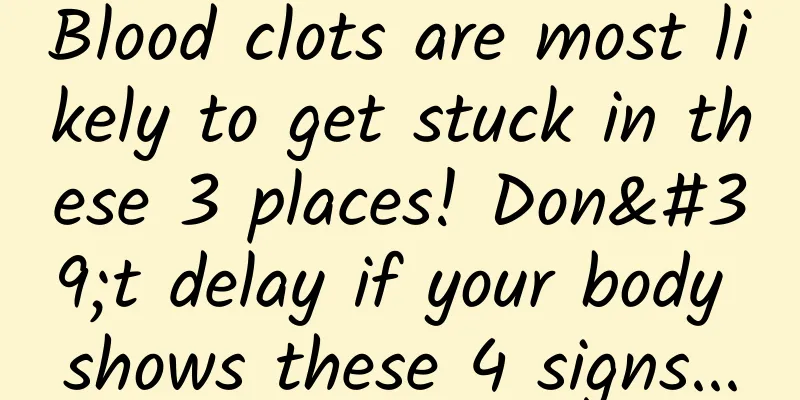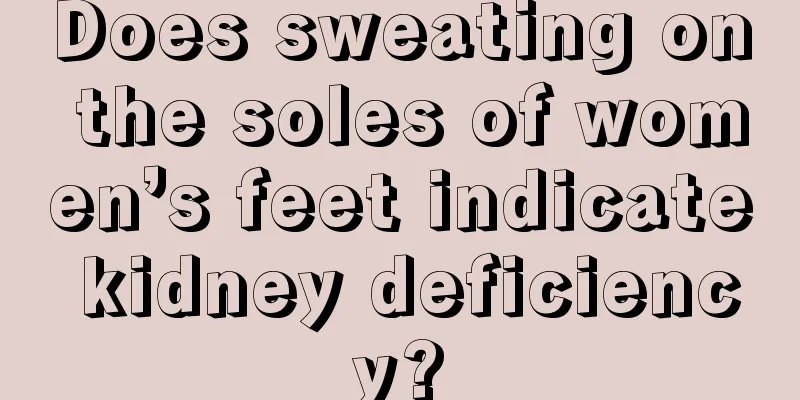Blood clots are most likely to get stuck in these 3 places! Don't delay if your body shows these 4 signs...

|
Thromboembolism, a potentially fatal condition caused by the formation of a blood clot in an artery or vein, should be managed properly. The three paths of love congestion: lungs, brain, and heart Thromboembolic diseases are mainly divided into three types according to the site of occurrence and manifestations: cardiac thrombosis, venous thrombosis and arterial thrombosis. The thrombosis formation mechanisms of these three sites are different, and different antithrombotic treatment strategies need to be selected. 1. Lung Blockage Venous thrombosis mainly blocks the lungs, and the most common disease is pulmonary embolism caused by deep vein thrombosis in the lower extremities. Stay away from venous thrombosis, move more, and keep your veins "unobstructed." Venous thrombosis is mainly treated with anticoagulation, and drugs such as heparin and warfarin are commonly used clinically. 2. Love to block the brain Patients with atrial fibrillation are most likely to develop heart thrombosis. Because the normal contraction movement of the atria disappears, blood clots form in the heart cavity. Especially when the left atrial thrombus breaks off, it is most likely to block the cerebral blood vessels and cause cerebral embolism. Clinically, anticoagulant therapy is the main treatment, mainly using drugs such as warfarin, dabigatran and rivaroxaban. Patients must adjust their medications on time under the guidance of a doctor to avoid the risk of bleeding. 3. Love is a source of distress The most common site of arterial thrombosis is the heart vessels, leading to coronary heart disease. The arterial system has high pressure and fast blood flow. The main cause of thrombosis is the activation and aggregation of platelets. Therefore, antiplatelet therapy is an important means of preventing and treating thrombosis in the arterial system, such as aspirin and clopidogrel. Beware of these four signs: dizziness, numbness, lameness, and swelling In the early stages of thrombosis, the body does not feel it. When 90% of the blood is formed, vascular embolism will occur. To prevent thrombosis, we must pay attention to the signals sent by the body. 1. Dizziness When you are resting, you may suddenly feel dizzy, lose your balance and coordination, or even faint. This is the most common sign of cerebral thrombosis. If it happens frequently, you should go to the hospital as soon as possible. 2. Hemp When there is a blood clot in the human body, the limbs will feel numb and painful due to insufficient blood supply. Therefore, if you suddenly feel leg pain, pressure or numbness in the lower limbs in your life, you must be alert. 3. Lame If the blockage of blood vessels worsens, intermittent claudication will occur. After walking a few hundred meters, your legs will feel sore and you need to rest for a while to relieve it. Blood clots can cause insufficient blood supply, leading to muscle soreness. If the blockage of the lower limb arteries is ignored and the disease progresses further, it may lead to severe ischemia of the lower limbs, a decrease in skin temperature, weakening or disappearance of the pulsation of the dorsalis pedis and posterior tibial arteries, and lower limb pain when not walking. Further development may lead to limb ulceration, inability to heal wounds, and even tissue necrosis. 4. Swelling When blood clots form in the veins, blood cannot flow back to the heart. Pressure causes fluid to spread into the leg tissues. The easiest way to identify it is sudden swelling of one leg, usually below the knee. If you feel swelling in your calf but cannot confirm it by visual inspection, you can use a tape measure to compare. Remember these 16 words: take medicine first, quit smoking and drinking, eat a light diet, and increase exercise Blood clots appear gradually, and it is not easy to prevent them from forming again. It is a long process. Only by "long-term treatment" can there be "long-term peace". 1. The word "medicine" comes first Drug therapy plays a vital role in thrombosis prevention. Following the instructions of vascular surgeons and taking medication regularly is the basis for thrombosis prevention. Anticoagulant and antiplatelet therapy directly prevent thrombosis. Do not stop taking the medication without authorization and take the medication strictly according to the doctor's instructions. 2. Quitting smoking and drinking Patients who smoke for a long time must be "harder" on themselves. A small cigarette can inadvertently destroy blood circulation areas throughout the body, with disastrous consequences. 3. Eat a light diet Eat less greasy, spicy and irritating food, and eat more food rich in vitamin C and plant protein. 4. Increase exercise Participating in certain physical labor and sports activities is beneficial to exercising the circulatory system function and adjusting blood lipid metabolism. It can prevent blood viscosity and slow flow. Pay attention to gradual progress and focus on gentle sports activities. (Source: Health Times) |
<<: Can skipping dinner really help you lose weight?
Recommend
Several hazards of women staying up late
I believe everyone knows that staying up late is ...
Do I need estrogen supplements after menopause?
Many people start to supplement estrogen blindly ...
Miscarriage test paper still has two lines
Can two lines be detected during miscarriage? The...
Is cod suitable for babies? What are the benefits of eating cod for babies?
Cod is a nutritious food with low fat, high prote...
How bad will your body become after losing these 6 things?
Calcium: 99% of calcium is found in bones and tee...
Why do I feel particularly hungry during my period?
When menstruating, everyone's performance wil...
What are the benefits of eating purple rice for women? Can purple rice be eaten as a staple food for weight loss?
Purple rice is also rich in calcium. Regular cons...
COVID-19 Medication Tips | Can human immunoglobulin prevent and treat viral infections? Improve your immunity, you may have believed these rumors!
Recently, the news that the "super strong&qu...
I ate snow clam twice and my menstruation stopped. What happened?
Snow clam is a very precious seafood market and i...
Is it difficult to treat fallopian tube adhesions?
Some women suffer from fallopian tube adhesions, ...
Hot compresses for carpal tunnel syndrome in pregnant women
In modern society, because computers have become ...
Why does pregnant women have high cholesterol?
Pregnant women need to pay attention to their phy...
What to do if your breasts swell after milking
Breast pain after milk production is a common con...
How to remedy sexual intercourse during menstruation
It is common sense in sexual life that you cannot...
What is Hemophagocytic Syndrome?
This is the 4561st article of Da Yi Xiao Hu Summe...









